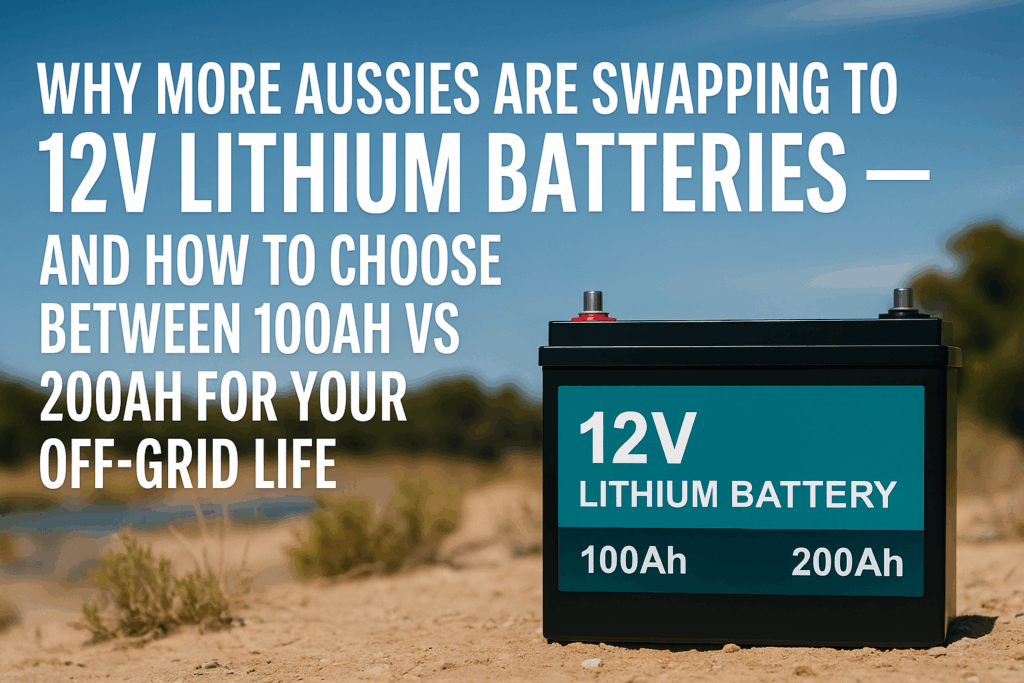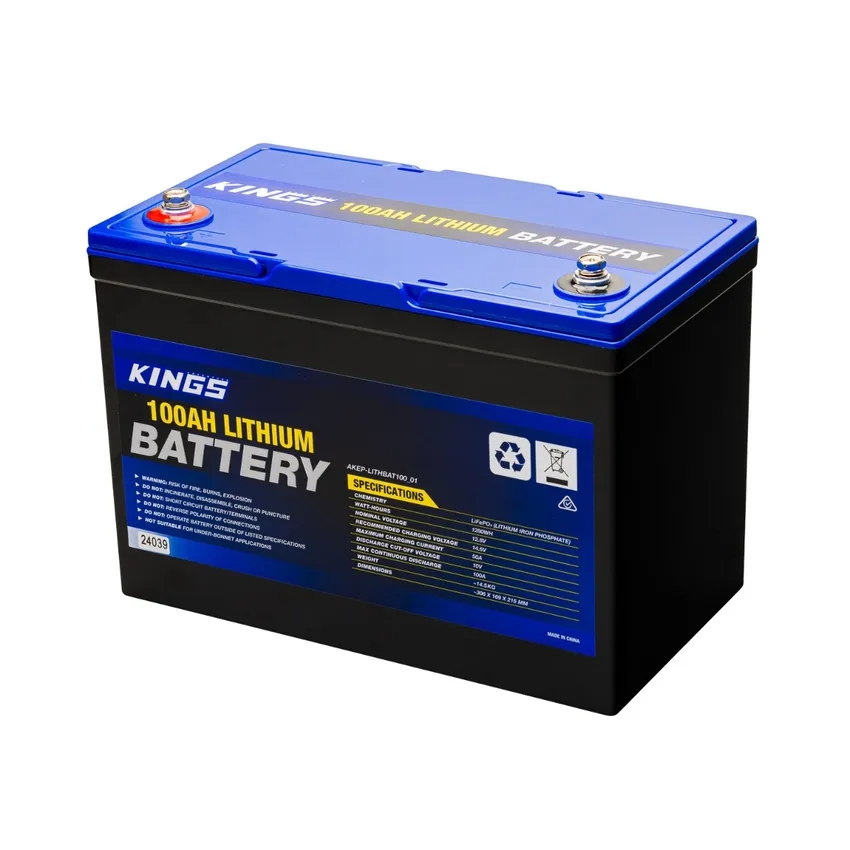Why More Aussies Are Swapping to 12V Lithium Batteries
The Aussie Off-Grid Living: Why Lithium is Taking Over
Australia’s rugged landscapes, endless coastline, and sun-soaked outback have always called to the adventurous spirit. But in recent years, more Australians are turning that call into a lifestyle—embracing remote work, van life, off-grid cabins, RV camping and weekend 4×4 getaways. At the heart of this movement is a quiet revolution in power storage: the 12 volt lithium battery.
Gone are the days of lugging around heavy, short-lived lead-acid batteries or worrying about being stranded in the bush with a flat. Lithium battery technology has rapidly matured, and today’s options are lighter, longer-lasting, faster-charging, and safer than ever. Whether you’re powering a fridge in the desert or keeping your devices charged on a beach in Byron Bay, a reliable lithium setup is key to going further with confidence.
12V Lithium Battery: Priority for Aussie Power Freedom
For most off-grid applications, 12 volt lithium batteries have become the go-to solution. Why 12V? Because it’s the most common system voltage in RVs, caravans, 4WDs, boats, and small solar setups across Australia. This compatibility makes them a seamless upgrade from traditional AGM or lead-acid batteries—without the need to rewire your entire system.
But compatibility is just the beginning. Here’s why more Aussies are choosing lithium:
-
Lightweight: A 12V lithium battery weighs roughly half of an AGM equivalent, which matters when every kilo counts on a 4WD or van.
-
Fast charging: Lithium batteries can charge 3–5x faster than lead-acid.
-
Deep discharge without damage: Use 80–90% of capacity without hurting lifespan.
-
Longer life cycles: Expect 3000–5000 cycles—much more than 500–800 from lead-acid.
-
Built-in BMS (Battery Management System): Intelligent safety protection for overcharge, short-circuit, temperature, and more.
It’s no surprise that lithium is fast becoming the standard battery tech for off-grid freedom in Australia.
100Ah vs 200Ah: Which One Powers Your Adventure Better?
Now that you’re sold on lithium, one of the first real decisions is size. The two most popular capacities? 100Ah and 200Ah.
To make it easier to visualize, let’s meet two Aussies with very different power needs:
Lisa the Weekend Camper: 100Ah Lithium Battery
Lisa lives in Melbourne and enjoys spontaneous weekend trips to the Grampians or Great Ocean Road in her cozy campervan. Her setup includes a 12V fridge, some LED lights, phone/laptop charging, and the occasional use of a water pump.
Why the 100ah lithium battery is perfect for Lisa:
-
Compact and lightweight—easy to install and won’t eat into storage.
-
More than enough to power small loads for 1–2 nights.
-
Affordable entry point for lithium, without overspending on unused capacity.
-
Can be recharged quickly using a 200W–300W solar panel during the day.
This is the sweet spot for light users and weekend warriors.
Jack the Remote Nomad: 200Ah Lithium Battery
Jack’s a full-time traveler from Queensland. His caravan includes a 12V freezer, inverter for a coffee machine, water pumps, fan, Starlink internet, and a small TV. He spends weeks in remote locations without grid access.
Why the 200ah lithium battery fits Jack’s lifestyle:
-
Offers extended runtime between charges—perfect for overcast or cloudy days.
-
Can comfortably support higher power loads or longer usage each day.
-
Pairs well with large rooftop solar systems (e.g., 600W–1000W).
-
Leaves headroom for future upgrades like electric cooktops or extra appliances.
If you’re living off-grid or planning extended travel, 200Ah gives you the buffer and peace of mind you need.
Cost vs Capacity: Finding the Sweet Spot
One of the most common questions we get is: Should I go for two 100Ah lithium batteries or one 200Ah?
Here’s a quick breakdown of how they compare:
| Feature | 100Ah Lithium Battery | 200Ah Lithium Battery |
|---|---|---|
| Ideal for | Light/moderate usage | Heavy or long-term usage |
| Weight | ~11–13kg | ~22–25kg |
| Typical price (AUD) | $500–$700 | $900–$1,300 |
| Expandability | Easier to parallel multiple | May need bigger space/setup |
| Backup time | 1–2 days basic usage | 3–5 days full usage |
Our tip? If you’re unsure, start with a 100Ah system. Many models are modular—so you can add another in parallel later when your power needs grow.
What Aussies Should Look for in a Lithium Battery Supplier
Buying a lithium battery isn’t just about specs—it’s about who you’re buying from. Especially in Australia, where long distances and harsh conditions make local support and durability essential.
Here’s a quick checklist when evaluating a supplier:
-
✅ LiFePO4 chemistry: This is the safest and longest-lasting lithium chemistry.
-
✅ Genuine BMS: Ensures your battery won’t be damaged by overcharge or heat.
-
✅ Cycle life warranty: Look for warranties of 3000+ cycles or 5+ years.
-
✅ Local stock and support: Australia-based warehouses and support centers.
-
✅ Certifications: Compliance with Australian standards and testing.
Well-known local brands like iTechworld, Renogy, Enerdrive, Kings, and Victron etc are trusted across the country. Some Chinese suppliers also offer high-quality OEM models but be sure to vet them thoroughly.
Budget Lithium battery in Australia, Kings lithium battery is a top choice.
Kings 100Ah Lithium battery Kings 200Ah Lithium battery
Real-World Aussie Use Cases: Who’s Using What?
Let’s take a look at how Australians from different walks of life are using 12V lithium batteries:
Weekend Bush Camper in WA (100Ah Setup)
Ben, based in Perth, uses a 100Ah lithium battery in his off-road trailer for lights, a fridge, and USB charging. He pairs it with a 200W portable solar panel and reports zero issues after 18 months of regular weekend use.
Full-Time Vanlife in SA (Dual 100Ah Setup)
Tanya and Marcus travel full-time in their van. They run a 300W solar array, two 100Ah lithium batteries in parallel, and a 1000W inverter. They power a blender, fan, laptops, and a DC fridge—off-grid, full-time.
Tiny Home in NSW Highlands (200Ah System)
Peter lives in a solar-powered off-grid tiny home. He uses a 200Ah lithium battery paired with 800W of rooftop solar and a hybrid inverter. The system supports a fridge, induction cooktop, internet, and lighting.
Conclusion: Powering Your Aussie Lifestyle Starts with the Right Battery
Whether you’re a weekend explorer, a vanlife adventurer, or building a tiny home out bush, a 12 volt lithium battery offers the flexibility, performance, and peace of mind to keep you powered anywhere in Australia.
If your power needs are minimal and you value portability, the 100ah lithium battery is a perfect entry into the lithium world. If you’re looking for more runtime, headroom, and scalability, the 200ah lithium battery may be the smarter long-term investment.
Whichever route you take, choosing a high-quality lithium battery tailored to your lifestyle means fewer headaches, less maintenance, and more time doing what you love—exploring the wide, wild beauty of Australia.



